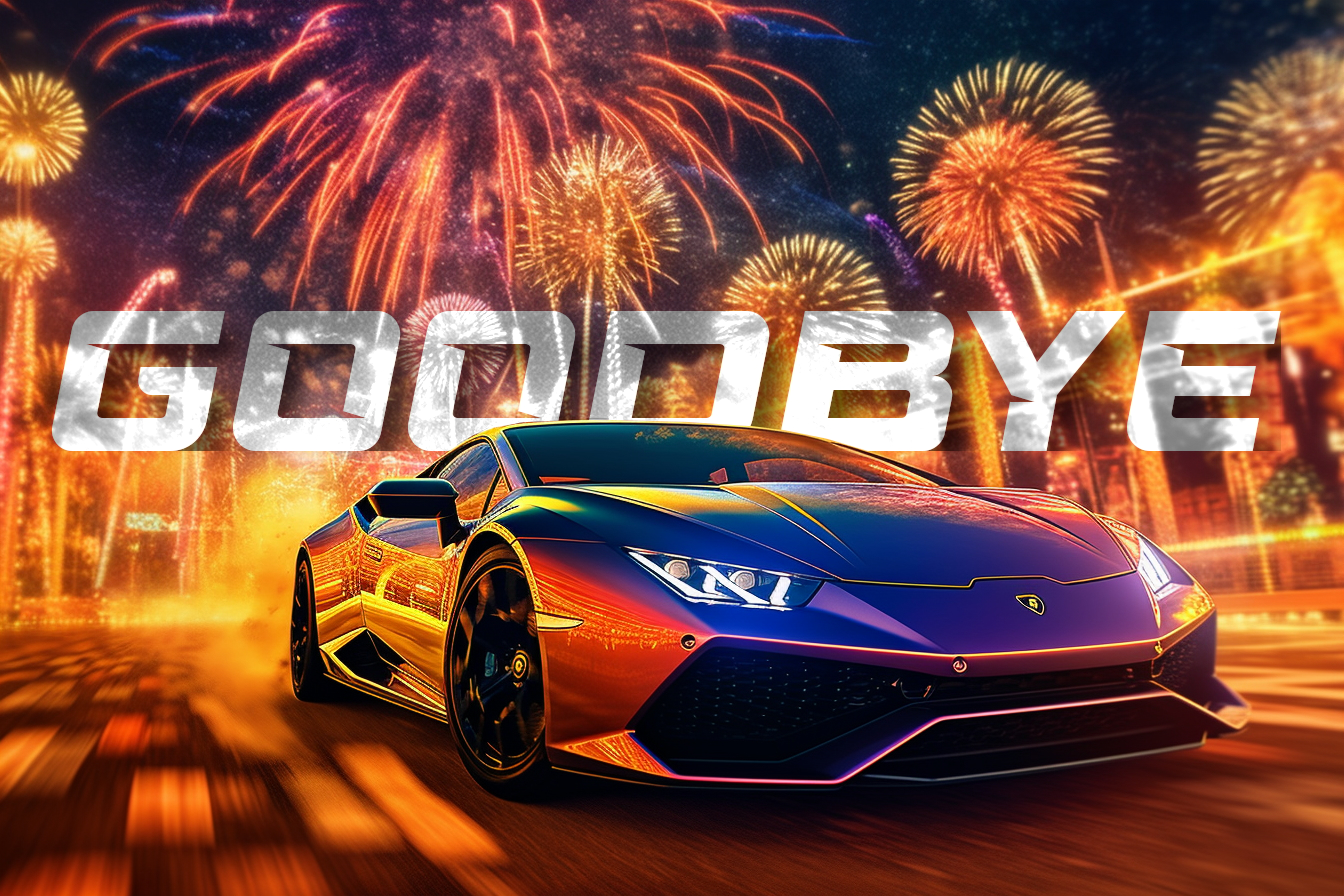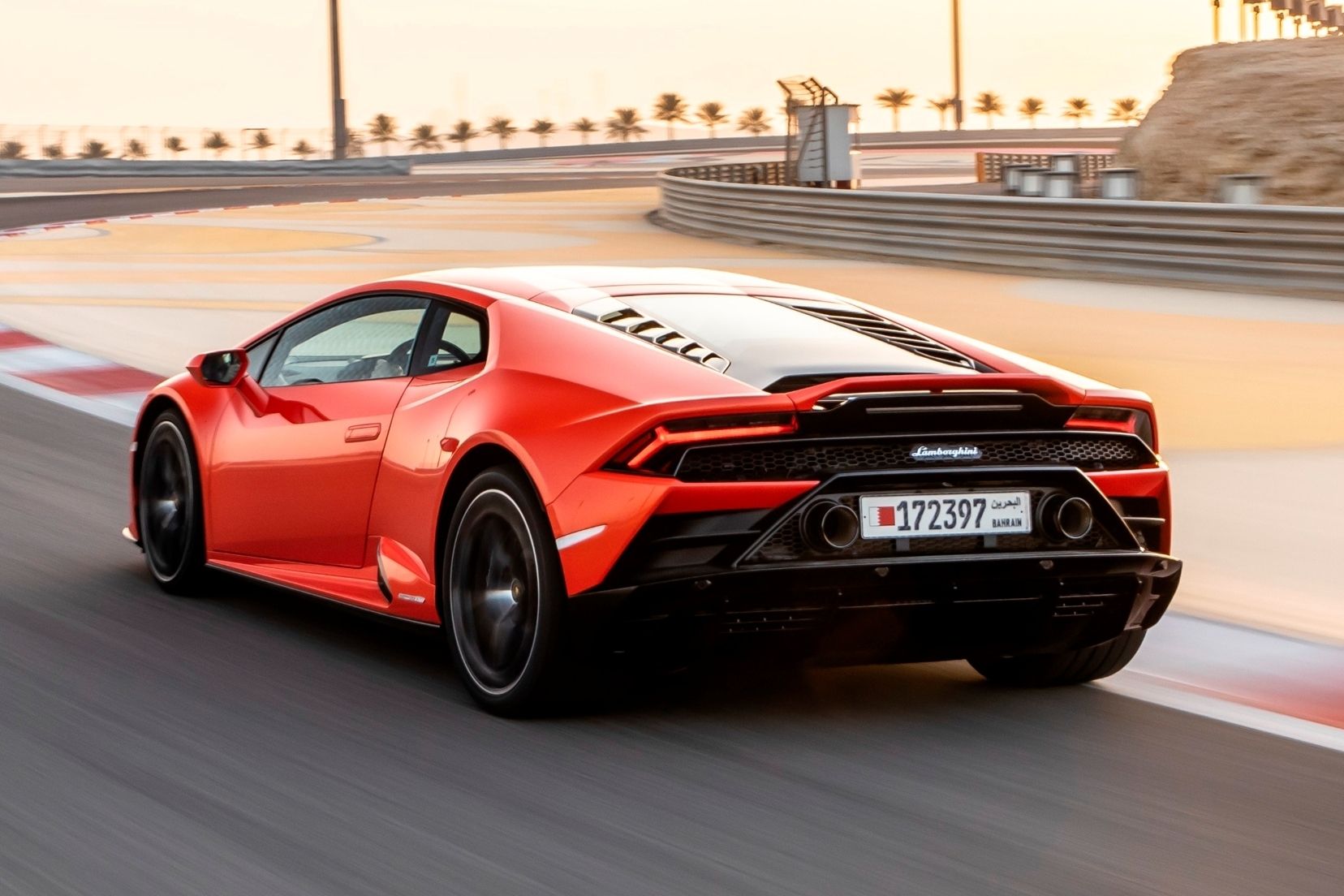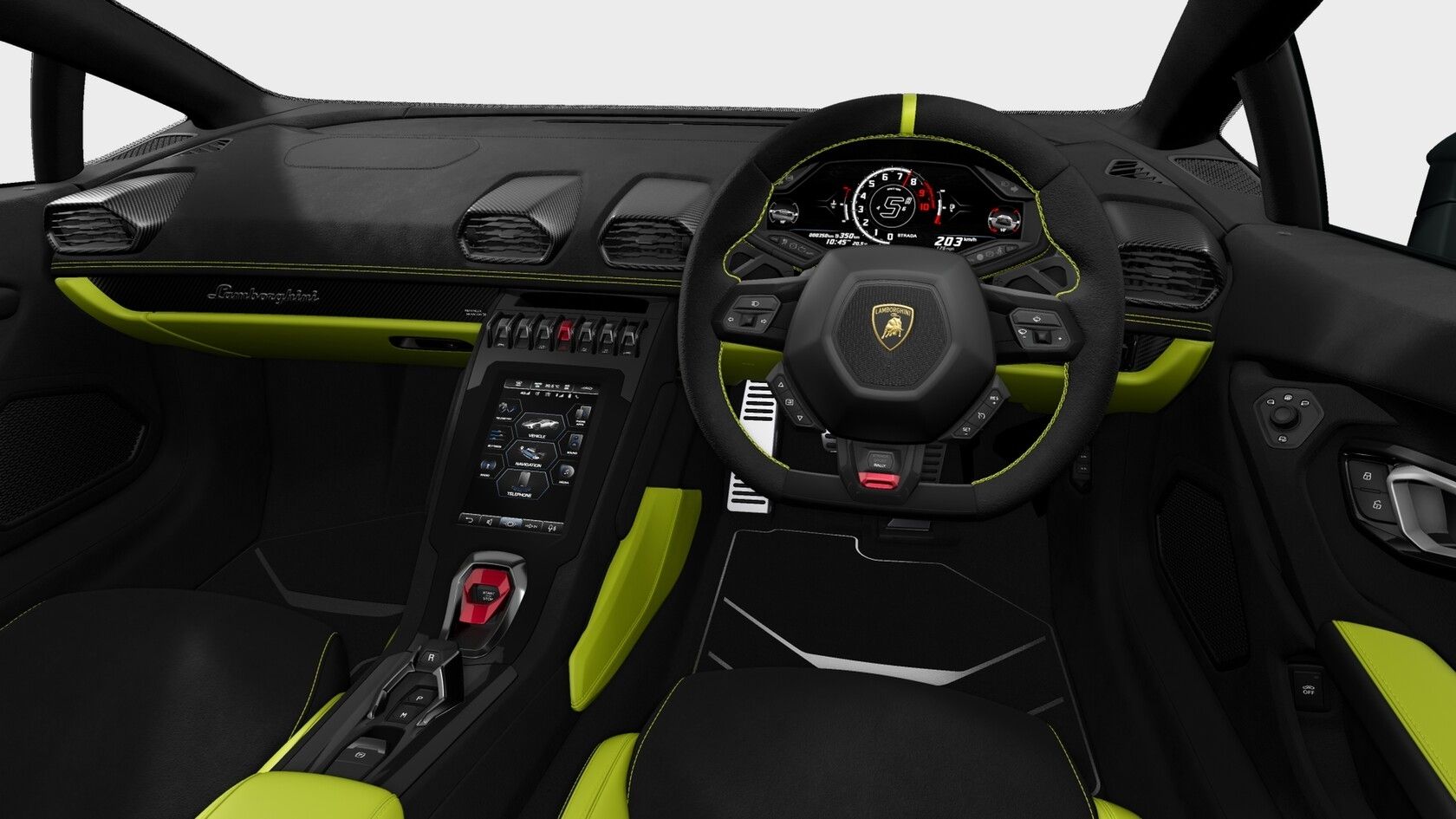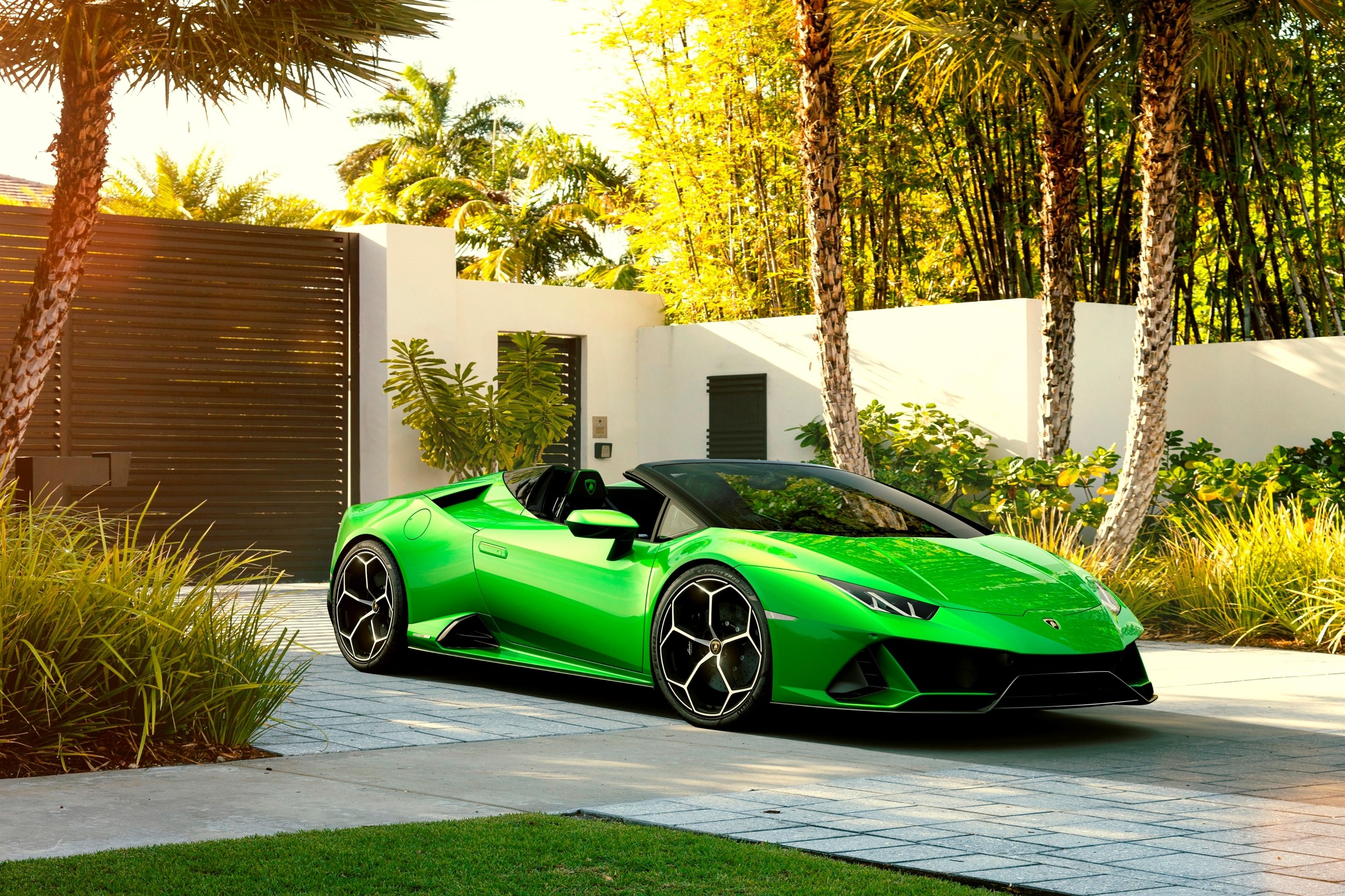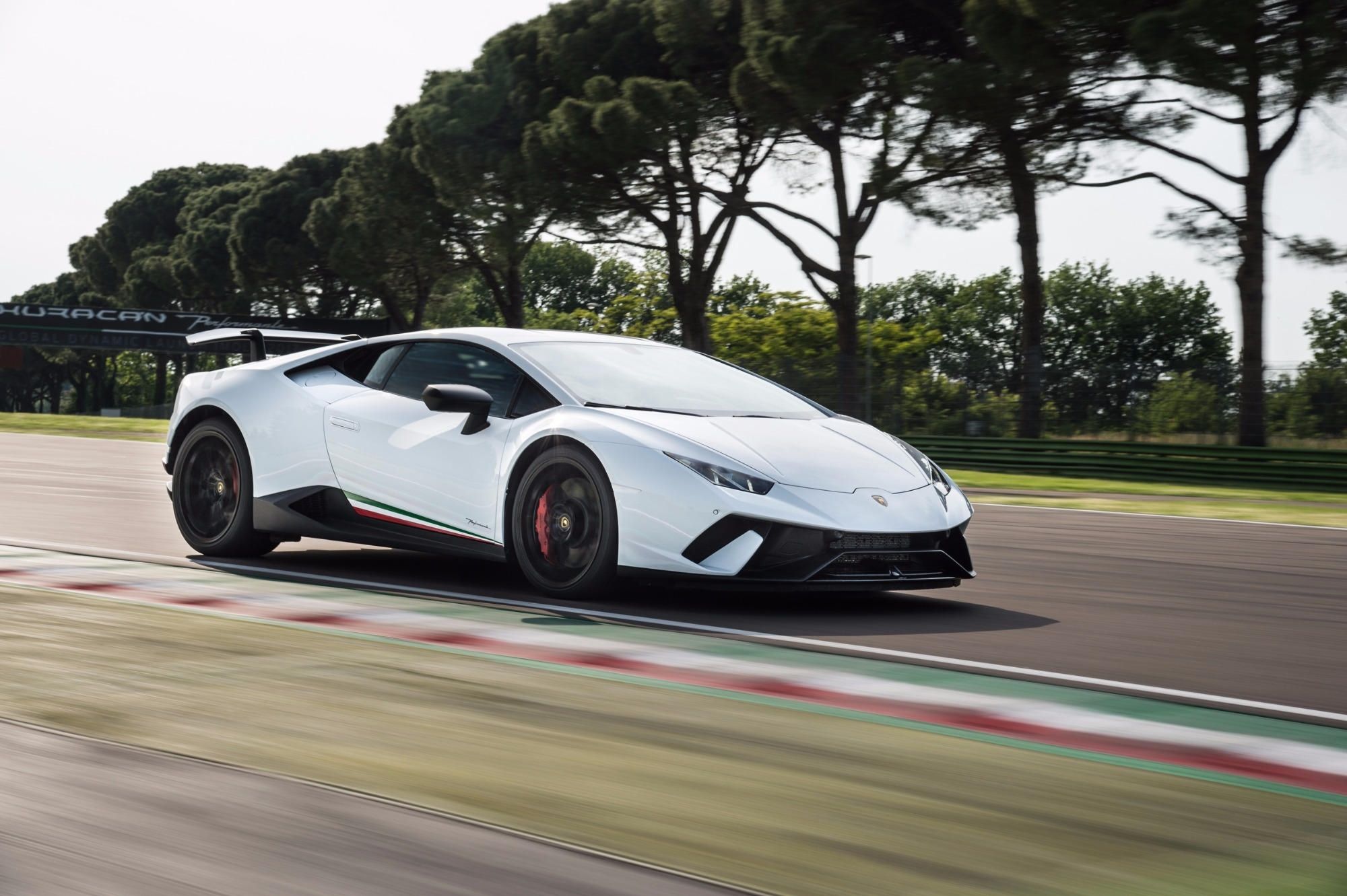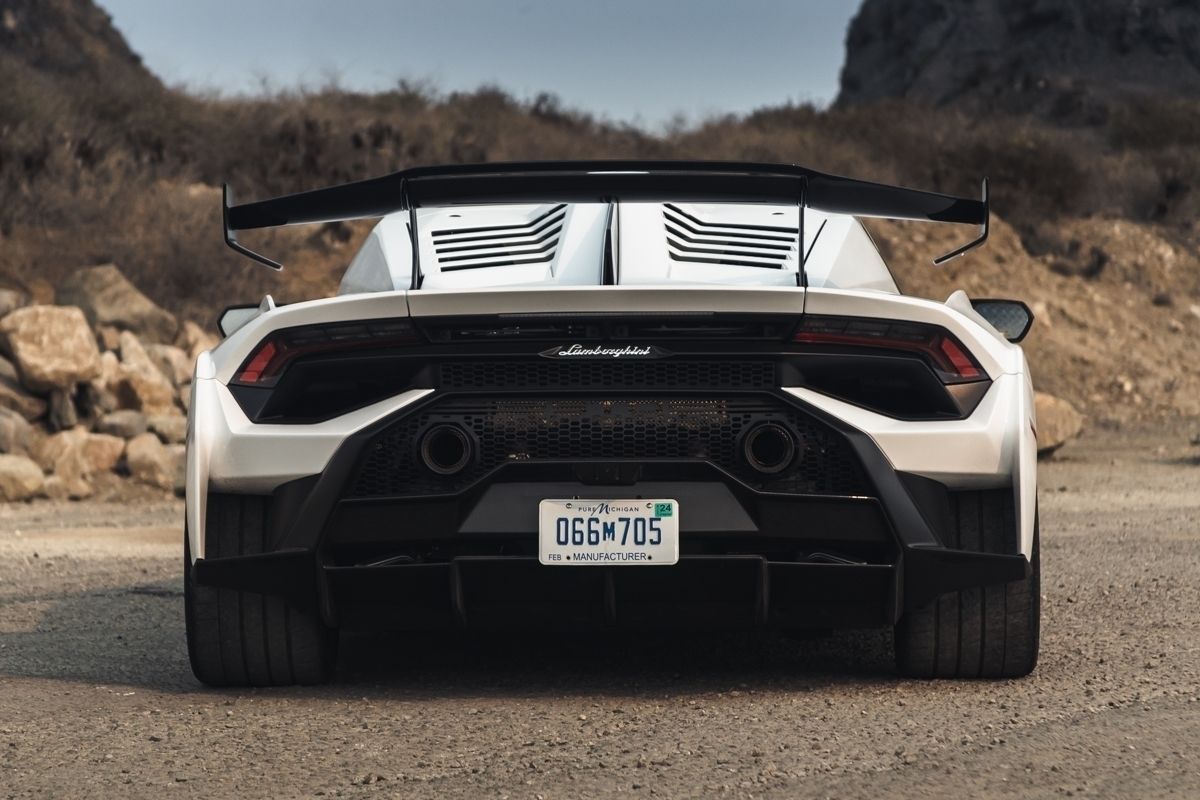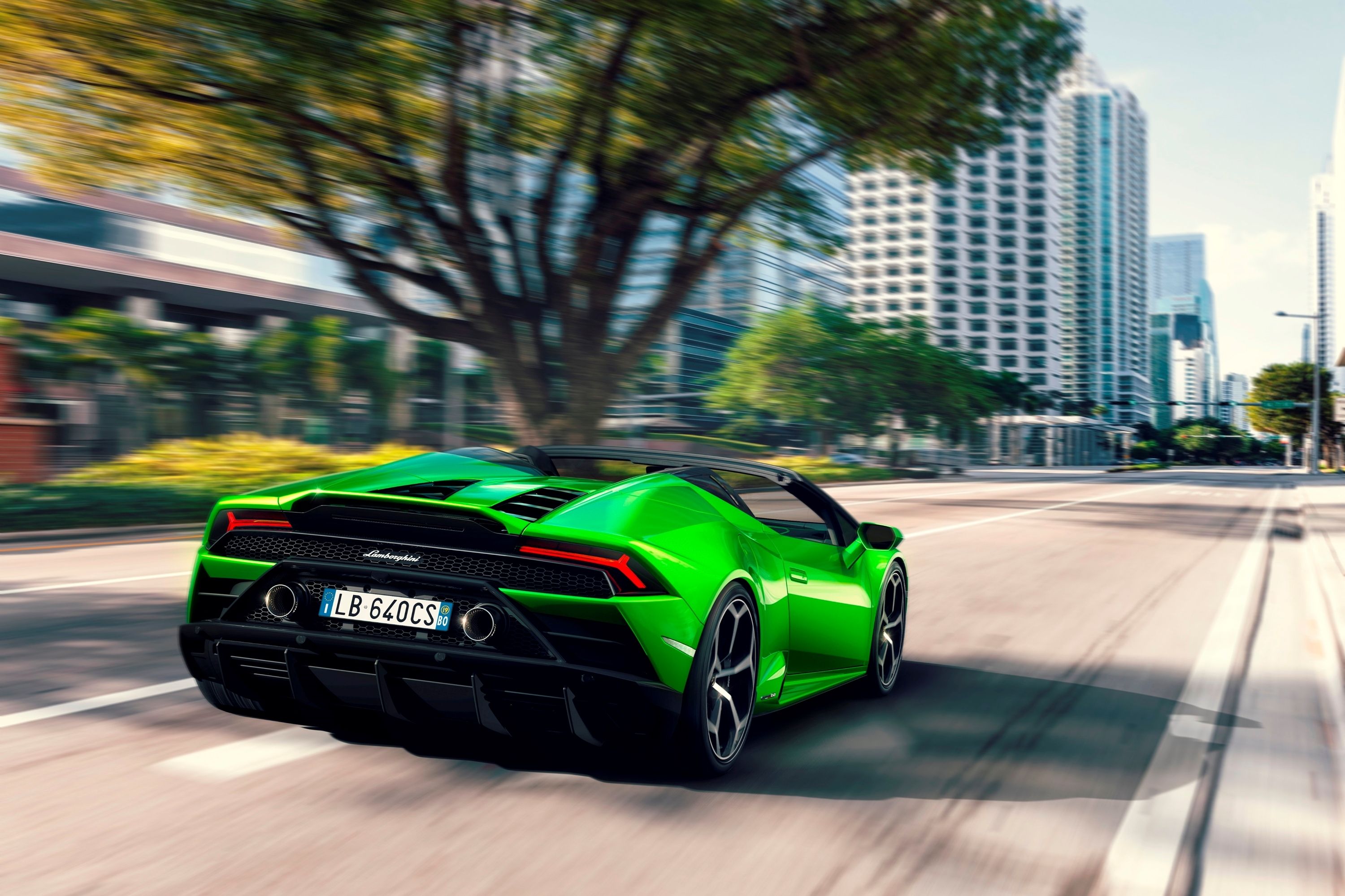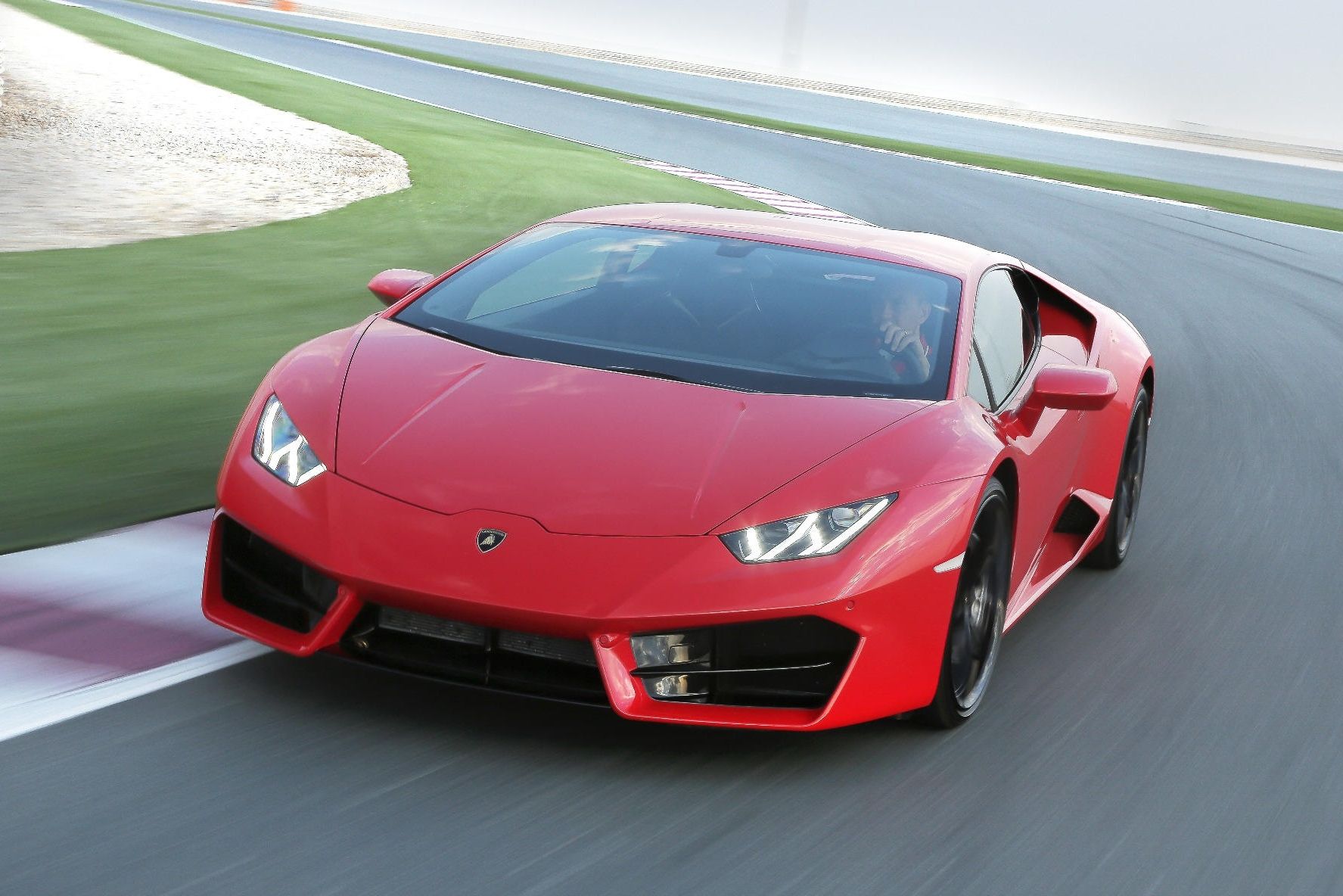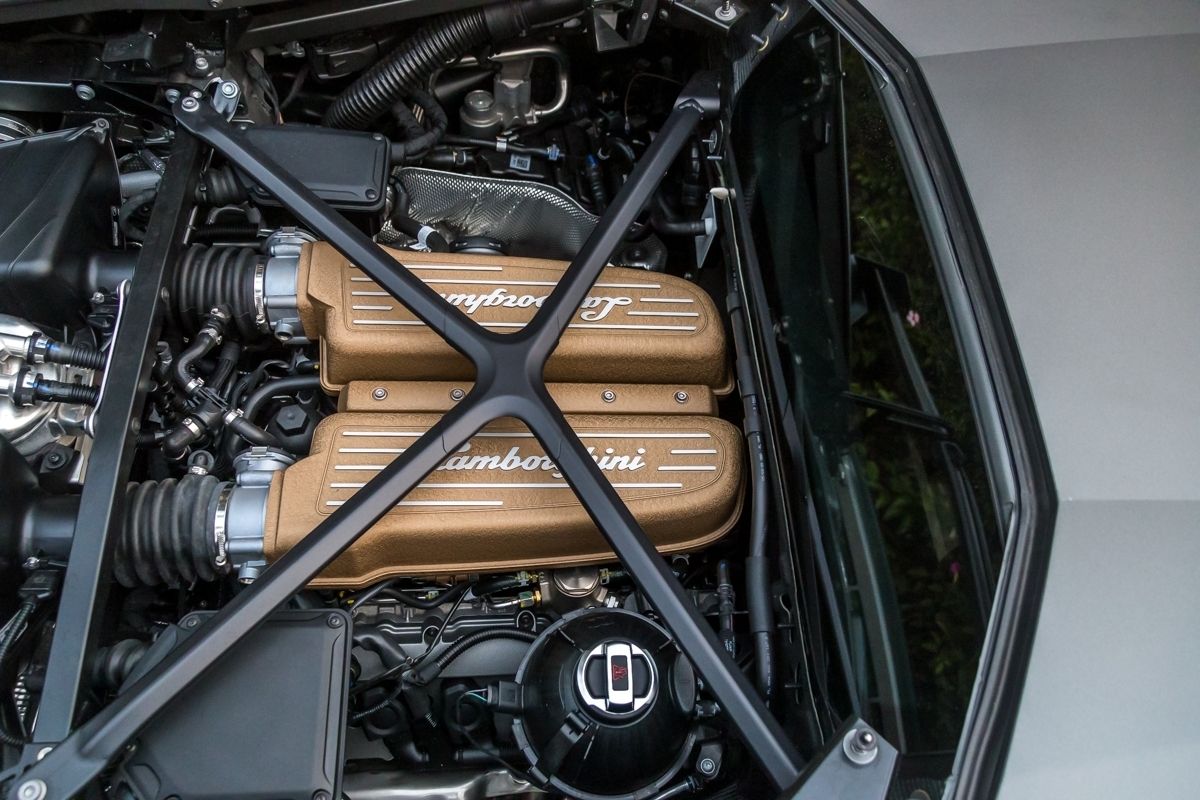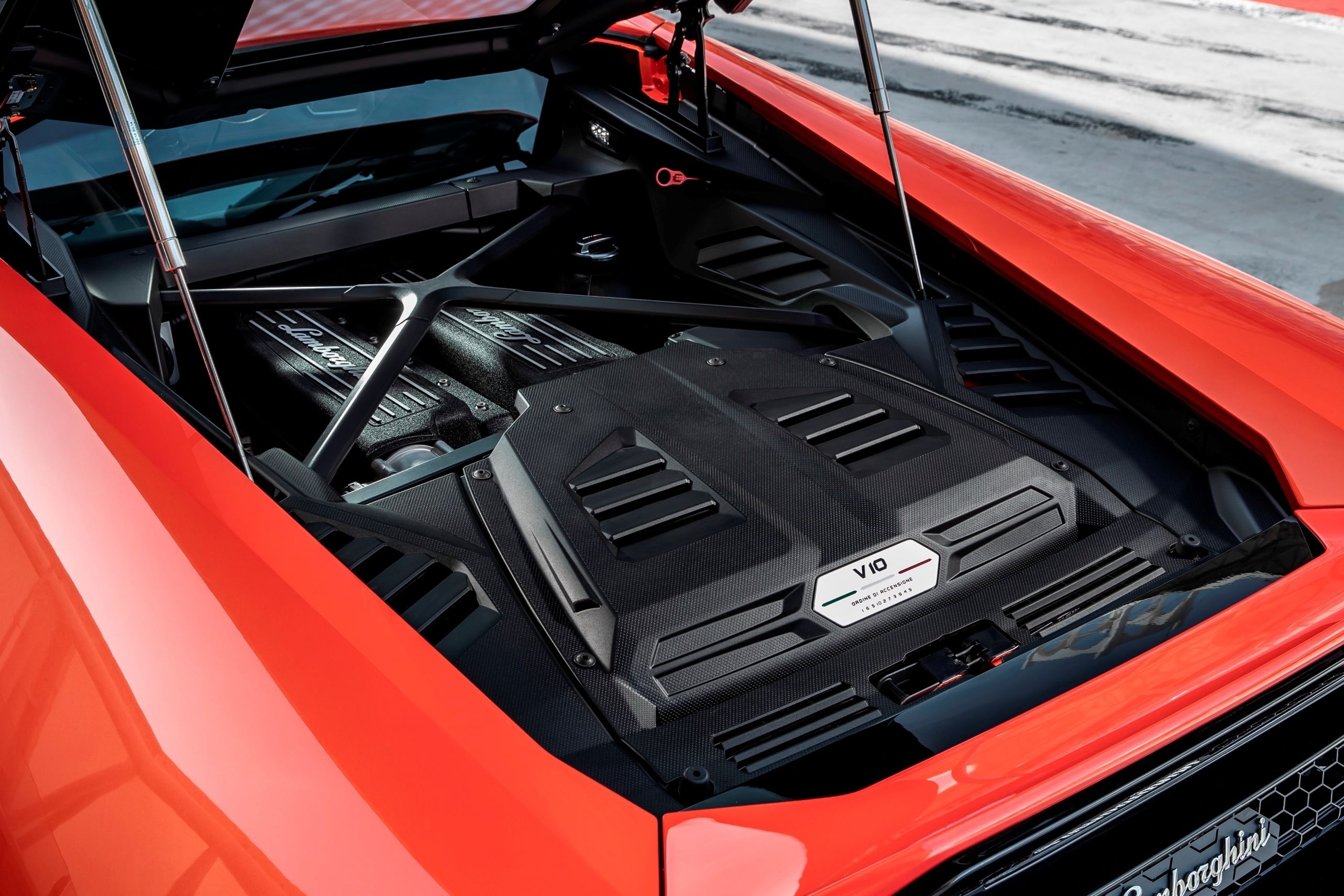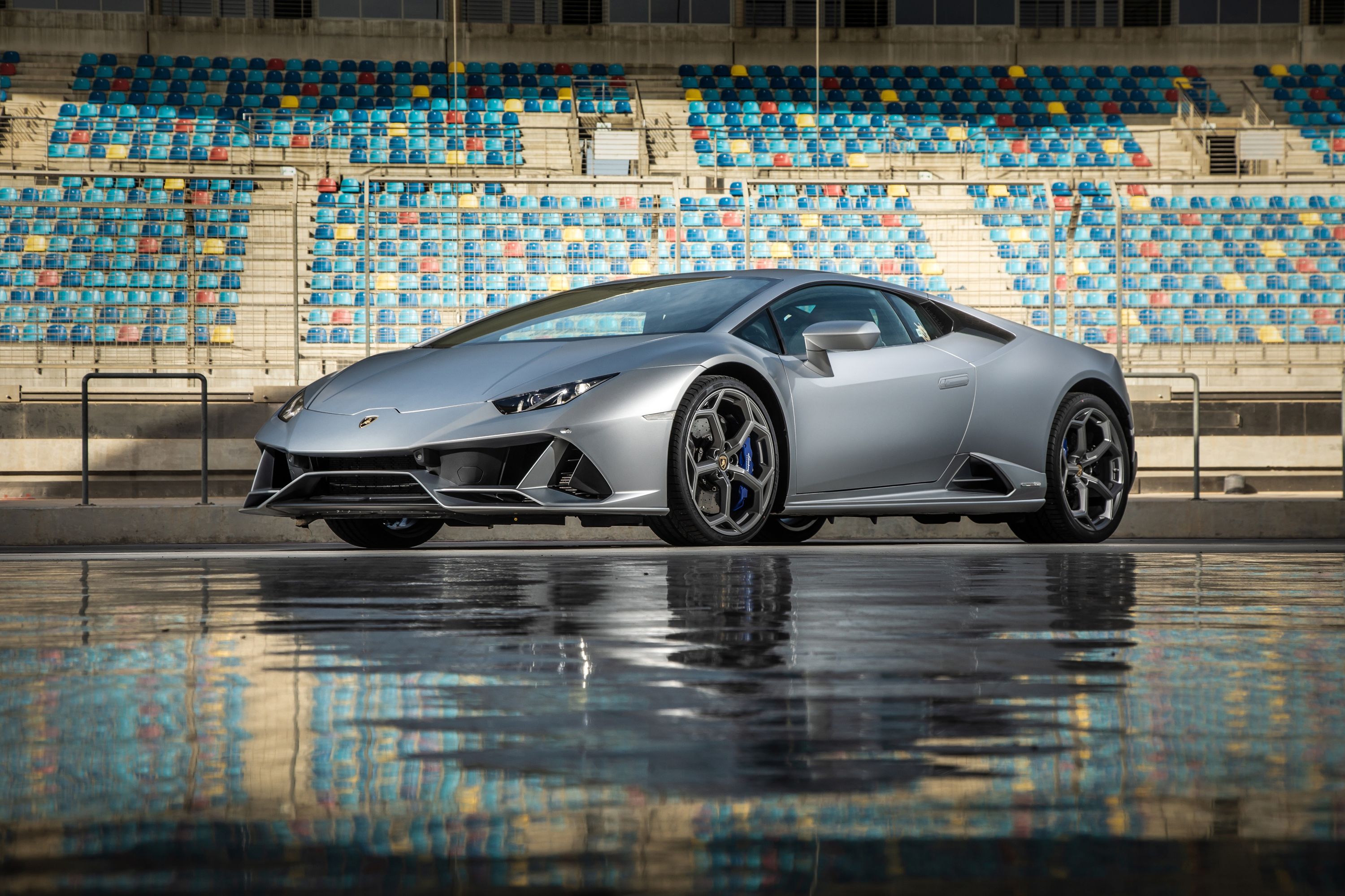
The death of a Lamborghini is always tragic, but when it was revealed that the Huracan had reached the end of its life, I was left a little sadder than usual. When the Aventador was killed off, it was a miserable moment in naturally aspirated supercar history, but the misery disappeared after five minutes.
I never quite gelled with the Aventador, mainly because it was so vast and always felt like a colossal show-off opening the doors. Science recently proved that men that are ill-equipped in the trouser department seek out cars like this, and I couldn't shake the belief that everyone watching me yoga my way out of an orange supercar had one thought running through their minds. "That dude must have a one-inch wonder."
First impressions count, and while this may seem odd, two things stick out from my first encounter with a Lamborghini Huracan. The doors opened normally, and it had a Stop/Start switch. The latter would be the most useless switch in all of automotive history if it weren't for the Jeep Grand Cherokee Trackhawk's Eco Mode.
I spent more time with the car as the years passed, and these are all the reasons why the Huracan deserves an homage.
A Real Daily Supercar
When the Huracan first came out, there were questions about whether it was wild enough. It's a fair point. We wouldn't call it boring, but parked next to any other Lamborghini (including the Gallardo), it just seemed tame. Now, nearly ten years down the line, it still looks fresh. I was treated to an early viewing of the Tecnica in New York, and I remember just how striking it looked compared to the 458 and 488 it competed with. Both Ferraris aged quickly and looked severely dated compared to the latest models. The Huracan will always remain timeless.
The reason for the tame design is quite simple. Every intake was functional, and Lamborghini resisted the urge to include wild wings and diffusers until it was essential on more feral models like the Performante and STO.
Because the designers worked with their heads instead of their hearts, the Huracan was more practical than a Lamborghini has any right to be.
The frunk sucks, but that's to be expected. With a trunk full of V10, where else do you put stuff? At least it was big enough for a backpack. Weekend trips are out unless you post the luggage in advance. And why wouldn't you? That's such a Lambo-like thing to do.
What makes the Huracan useable daily is a combination of things.
First, it has loads of room on the inside. The seats are comfortable enough for daily driving while being supportive enough when you feel the need for speed. It's worth noting that the more hardcore Huracans barely had any cladding. Still, models like the STO obviously weren't built to be as usable as the standard Huracan and Huracan Evo.
I've seen many reports moaning about the ergonomics, but that's nothing more than finding flaws to have something to say. Yes, the toggle switches take some getting used to, but within two days, it will become second nature. And, by the way, have you seen the inside of a Ferrari 488? That's what confusion really looks like.
Finally, the fuel consumption. Yep, I'm going to talk about the gas mileage of a supercar, but not for the reasons you think.
The EPA said it would do 20 mpg on the combined cycle when it first arrived in the USA. Thanks to a rather generous 23.8-gallon tank, it could cover 380 miles without needing a refill. Compare that to the Aventador, which required a refill every 300 miles from the same size tank. The Huracan can go further between tanks than a BMW M3 of the same vintage.
The cost of fuel is irrelevant given the segment, but we all hate filling up. I've never heard a person say how much they love spending time at the gas station.
To me, not having to visit the gas station every third day is one of life's greatest luxuries. I'd take a proper range between tanks over massaging seats any day of the week.
The Size And Manners
I promise I won't keep discussing the practical attributes of a supercar. We'll get to the V10. Eventually.
The Huracan is tiny. It's 176 inches long, 76 inches wide, and a mere 46 inches tall. It's smaller, albeit a bit wider (roughly four inches) than a BMW 3 Series. Visibility is good, which makes it easy to park. The only thing that requires serious attention is the ground clearance. There isn't much, but you soon learn to work around it.
Owning a Huracan is also kind to your neighbors. A cold start can be boisterous, but it soon settles down to a gentle rumble. The exhaust valves only open when you put it in sport mode or smash the throttle into the carpet. Otherwise, it simply sails along without creating a fuss.
Some people may be scratching their heads, but I'll let you in on a little secret. I love a loud V8, V10, or V12 as much as any gearhead, but once you spend some real time with these cars, you soon realize that a constant bellow is annoying. Imagine getting in a car after a long-haul flight, and it constantly wants to growl at you. Sometimes, you want a car to STFU.
Lamborghini's Attitude
Ferruccio Lamborghini started his own car company after telling Enzo Ferrari that the clutches in his cars sucked. Ferrari infamously despised his customers and dismissed one of his biggest clients, telling him to go back to building tractors. Lamborghini decided to stick it to the man; the rest is history.
The main difference between the two brands is how they approach things. Ferrari is built around an impressive racing history, while Lamborghini has almost no racing history to speak of at all. Ferrari takes itself extremely seriously, while Lamborghini uses the switch from a fighter jet to start the car.
To me, a Ferrari is built for serious drivers, while Lambos are constructed to appeal to the 10-year-old in each of us. I know that fighter jet starter is a gimmick, but man, do I love using it. Even if you use a Huracan daily, it never gets old.
Am I dismissing Ferrari for being too serious? Not at all. Given a choice between a Huracan and a Ferrari 458 Italia, I'd go with the stallion every day of the week. It's in another league entirely. The scalpel-like steering means you can never go for a relaxed drive in a 458. You sneeze, and it changes three lanes. Driving a 458 is always an active experience, and the car is all the better for it.
But by not taking itself too seriously, Lamborghini built a car everyone could enjoy. In traffic, it feels like an Audi RS3 Sedan. The ride is a little stiff, but thanks to Lambo sticking its hands in the corporate parts bin, the Huracan feels familiar.
The dual-clutch isn't jarring when you leave it to do its own thing. But those big metal paddles are a constant reminder that a beast is hidden underneath this well-dressed Italian gentleman.
Driving Fast
If you're more enthusiastic about driving, I recommend a rear-wheel-drive Huracan. They can be twitchy buggers and tend to be more focused.
Driving a regular Huracan quickly is a treat for many reasons. Oddly, it feels a lot like driving an Audi RS3, albeit one that has been dosed up on Molly. The feedback through the steering wheel is decent, and you have the additional safety of a four-wheel-drive system. I'm reasonably certain I can teach my 11-year-old to do a proper lap time in the Huracan.
Now some of you might hit back with the understeer issue. It's a valid point. I fully admit that the Huracan tends to understeer if you push a bit hard, but I don't see that as a negative. For proof, we'll look at some research conducted by the AAA. In 2018, it published a study showing that eight out of 10 men think they're above-average drivers. They look at a supercar sliding at 130 mph and think, "I could handle that." Yeah, no.
I spent four years driving pickup trucks on gravel roads before transitioning to tarmac. (Top tip: if you want to learn how to control a slide, do it on gravel. It's much more forgiving, and nothing on planet Earth has a looser rear-end than a pickup with traction and stability control disengaged).
Out in the real world, understeer is what you want. You lift a little, and the car continues along the arc you had in mind. Now imagine that same scenario with a car set up to get its tail out. The professionals like Chris Harris make it look easy on YouTube, but I'm here to tell you that when a car's rear end steps out, most people panic and hit the brakes. And then they die.
Lamborghini made supercar speed more accessible with the Huracan, arguably making it a better supercar than the 458. The average buyer will get way more out of their Huracan than the Ferrari.
Do I think the Huracan is better? Nope. The 458 is the best supercar ever made, but I love the Huracan. Both things can be true. This isn't some Facebook argument where two keyboard warriors argue about irrelevant lap times no mortal will ever be able to achieve.
That Sweet V10
The Huracan also drags the V10 engine to its grave, which is a pity. Audi is also done with the V10, which leaves a grand total of no series-production V10 cars left. Some people prefer a V8 or a V12, but I'm a V6 (Busso, thank you very much) and V10 kind of guy. Just look at the list of iconic V10 cars: Dodge Viper, Lexus LFA, Porsche Carrera GT, BMW M5, and the Volkswagen Touareg V10 TDI. Don't laugh. The VW had enough torque to pull a Boeing 747.
Obviously, the V10s in the LFA and Carrera GT are more special, but they died out a long time ago. Apart from an extremely rare track-special McLaren, the V10 in the Huracan and Audi R8 was the only one left. It was first introduced in 2003 in the Gallardo as a 4,961 cc 90-degree V10. Lamborghini bored it out to 5.2 liters in 2008 and gave it an uneven firing order.
It was carried over to the Huracan, producing 602 horsepower and 413 lb-ft of torque when introduced. Once the facelift (Evo) arrived, the power was bumped up to 630 hp and 443 lb-ft of torque.
These figures are unimpressive compared to what McLaren and Ferrari are doing these days, but the Huracan will always have something they don't. Because the V10 is naturally aspirated, throttle responses are immediate. And there's no turbocharger robbing the exhaust of glorious engine noises. The Huracan made a distinct noise, which gave it loads of character.
While the rumored twin-turbocharged hybrid V8 replacement will likely produce more than 800 horses, we doubt the baby Lambo will ever sound as good again.
Conclusion
In April 2022, Lamborghini announced that the 20,000th Huracan had rolled off the assembly line at Sant'Agata Bolognese. The Gallardo only reached just over 14,000 units over a much longer period. This is good news if you're looking at buying a used Huracan.
You can get a clean example for roughly $200,000, while delivery mileage rare models like the STO sell for approximately $500,000. It seems like a lot, but we now live in a world where dealers expect you to pay new supercar money for a $110k Corvette Z06.
As the electrification and turbocharging trend continues, naturally aspirated supercars like this will only increase in value. Maybe not the Huracan or the Huracan Evo, but the STO and Technica will likely be worth a million once 2035 hits.
Either way, there won't ever be a supercar like the Huracan again.
Farewell, Huracan. The Ferrari 458/488 were objectively better, but as a daily supercar for drivers with a limited skillset, you were the ultimate.

